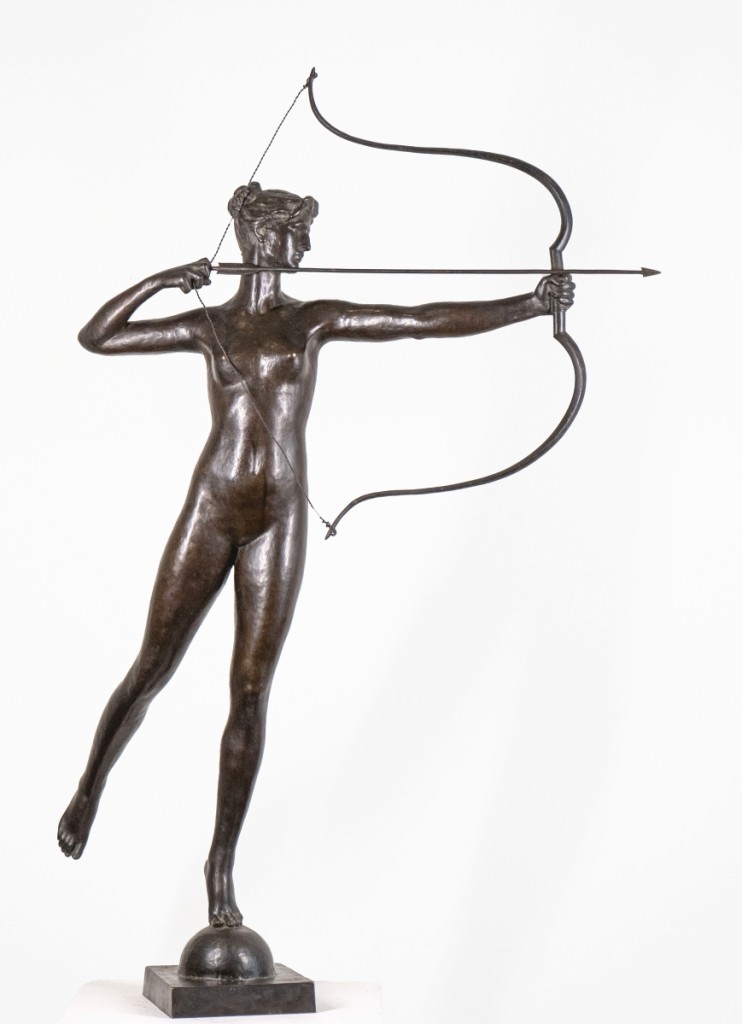
An iconic bronze sculpture of “Diana” by Augustus Saint-Gaudens (1848-1907) soared past its estimate of $200/400,000, selling for $506,000. Purchased by a young New York couple, it is the fifth highest price at auction for any work by Saint-Gaudens. Recently discovered by Keno, the sculpture was on display in a Delaware restaurant since its purchase by the restaurant owner in 1959.
Review by W.A. Demers, Photos Courtesy Keno Auctions
NEW YORK CITY – You would have to characterize Keno Auctions Americana and estate sale on January 23 as small but eclectic. The sale featured just five lots: a rare painting of George Washington by Gilbert Stuart, a bronze sculpture of Goddess Diana by Augustus Saint-Gaudens, two Chinese porcelain vases and a work of Outsider art.
It was a far cry from the mega-lot auctions where the conveyor belt of objects rolls on and eyes glaze over from the very surfeit of rare confections.
For Leigh Keno, the tidy sale, which nevertheless totaled $930,470 and contributed the second highest selling lot of New York City’s Americana Week, was intentionally so. “Our logic was dictated by a sale that we planned for the end of February, a cataloged sale of about 200 lots, to be followed by a small, separate offering of Modern objects.”
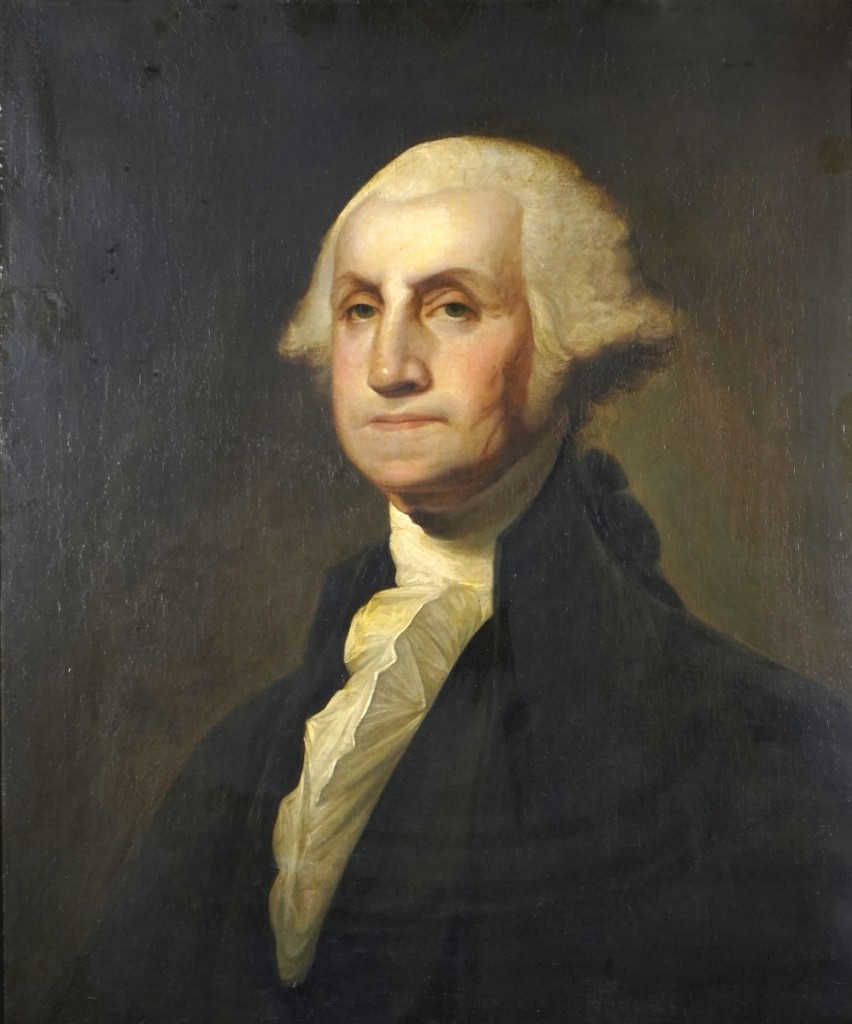
The rare and important “Kinsman Portrait of George Washington,” painted by Gilbert Stuart (1755-1829) rose above its $150/300,000 estimate to sell for $356,000 to a Southern private collector. The historic portrait had never before been offered at auction.
Said Keno, “We were very happy with the sale results. It is very encouraging that for an Americana Week sale of just five lots, we had a total of 617 registered bidders from 28 countries, with several bids on the top items coming from some of those countries.”
Augustus Saint-Gaudens’ (American 1848-1907) bronze figure of the Goddess Diana hit the high mark, finishing at $506,250, chased there by 49 bids. The sculpture’s final price was only eclipsed by the Declaration of Independence that sold at Christie’s during Americana Week for $990,000 [See separate review in this issue]. The figure is a classic, certainly familiar to those who remember the sculptor’s second version as a famous New York City landmark, “Diana of the Tower,” standing atop the tower of Madison Square Garden from 1893 to 1925 and afterwards entering the collection of the Philadelphia Museum of Art. This version made by Aubry Brothers bronze foundry, New York, circa 1895, portrays the goddess similarly holding a large recurve bow with arrow and perched upon a hemisphere and integral square plinth. She stands 31 inches high and has a provenance trail that includes Frank P. Ewing, Wilmington, Del., a 1959 purchase by Constantine “Gus” Sclavos (1896-1985) owner of Glasgow Arms restaurant, Glasgow, Del., and his daughter Mary Sclavos Murphy (1925-2020), Elkton, Del.
“Diana” is arguably Saint-Gaudens’ most celebrated sculpture and exhibits all of the characteristics of the artist’s best work. It happens to be the only model of a female nude that the artist ever produced. Diana began as Saint-Gaudens’ innovative version of a weathervane. The classically styled Diana that he produced has endured today as his most celebrated sculpture and distinguished him then and now as one of the leading artists in the realm of Nineteenth Century American sculpture.
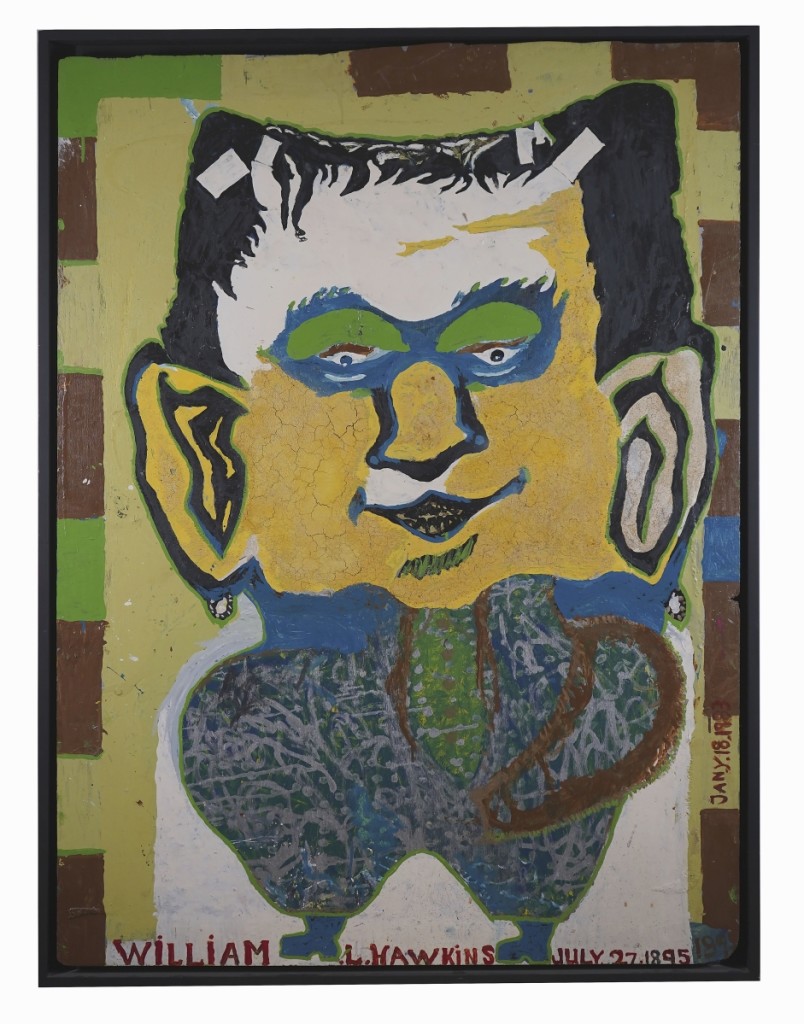
The sale also included “Frankenstein” by Outsider artist William Hawkins, who was inspired by the image on a box of Frankenberry cereal. Estimated $25/50,000, it finished at $41,000. The painting will return to its hometown of Columbus, Ohio, won by a dealer on the phone.
Prior to the discovery of the present “Diana” there were just six examples of the 31-inch (height of figure alone) reductions known. This newly discovered sculpture is the seventh. Saint-Gaudens had these large bronze “reductions” cast by the Aubry Brothers bronze foundry in downtown Manhattan.
Keno related that this “Diana” was a survivor of a mid-1970s encounter between the restaurant in which she stood seemingly protecting patrons and a large truck that careened into the establishment, causing much damage inside and knocking over the figure. After all of the crash’s detritus had been swept up, Mary noticed that the tip of Diana’s arrow was missing. She quickly drove over to the huge landfill where the debris was being offloaded and miraculously retrieved it. The original broken piece was reattached with the help of a metal sleeve. Two holes had been drilled into the rectangular base around 1960 by Gus Sclavos in order to attach it to a black-painted wooden block for the purpose of making the sculpture more stable for display in a restaurant environment. The block was removed from the base by Keno Auctions but was available to accompany the sculpture when sold. Keno said it was purchased by a young couple, perhaps their first major piece of sculpture to add to their collection. They were underbid by a dealer on telephone bidding for a West Coast collector.
Fetching $356,250, the second highest price in the sale, was Gilbert Stuart’s (American, 1755-1828) famous portrait of George Washington, known as the “Israel Kinsman” portrait. The 30½-by-25½-inch oil on canvas is said to have been purchased about 1817 by Israel Kinsman (1789-1862) for his home at 359 Arch Street, Philadelphia, the acquisition coinciding with his marriage in 1817 to Elizabeth Walker (1797-1848). In an 1835 inventory of Kinsman’s possessions is a listing of “Stuart-Washington in oil color” in “Front room 2nd story.”
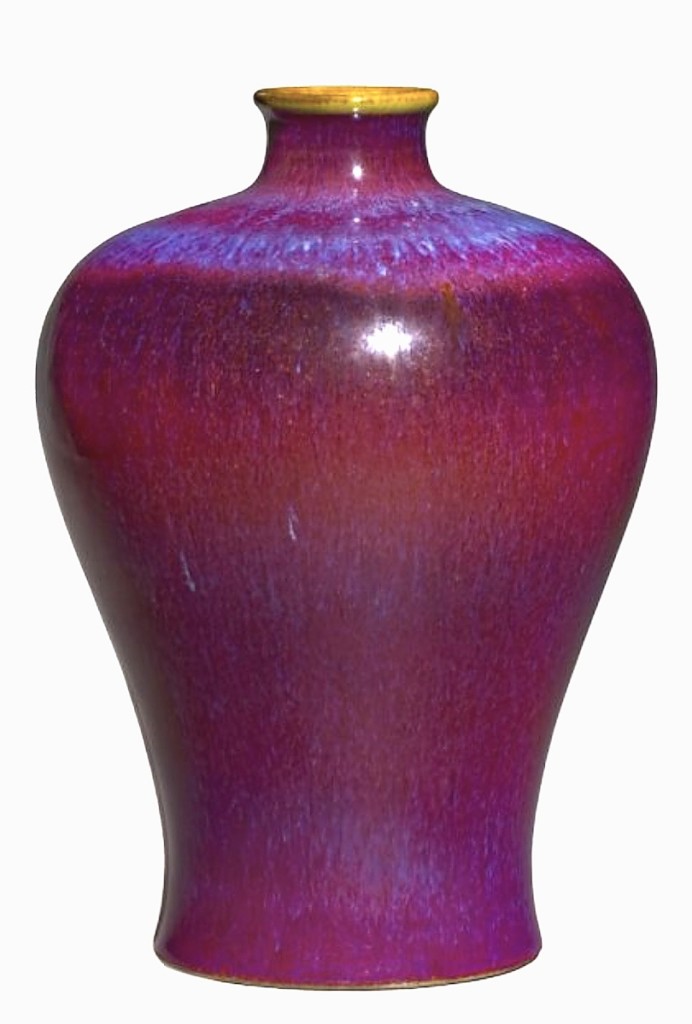
A flambé meiping vase with Qianlong mark and of the period (1736-1795), and with Christie’s London provenance flew past its estimate of $6/12,000 to sell for $21,000 to a Chinese buyer bidding by phone.
The portrait descended to Elizabeth’s children, and in an 1849 family division of property it went to Louise Kinsman, followed by a number of Twentieth Century purchases, culminating in 2018 when it came to the consignor. Now it goes to a Southern collector who was bidding by phone.
In catalog notes for the painting, experts Ellen G. Miles and Carrie Rebora Barratt identified three distinct periods of paintings and replicas of Washington by Gilbert Stuart. The first period (1794-1803), began when the artist first arrived in Philadelphia from New York in November of 1794, expressly to paint George Washington. His first portrait of Washington, known today as the Vaughan type portrait, was painted some time in 1795. Early portraits of this period show Washington with a long oval face and a delicate lace ruffle.
George and Martha Washington visited Stuart at his studio in Germantown, north of Philadelphia where, in January 1797, Washington sat for the portrait now known as the Athenaeum portrait. Reportedly, Washington initially gave the artist permission to keep their unfinished portraits in order to make replicas.
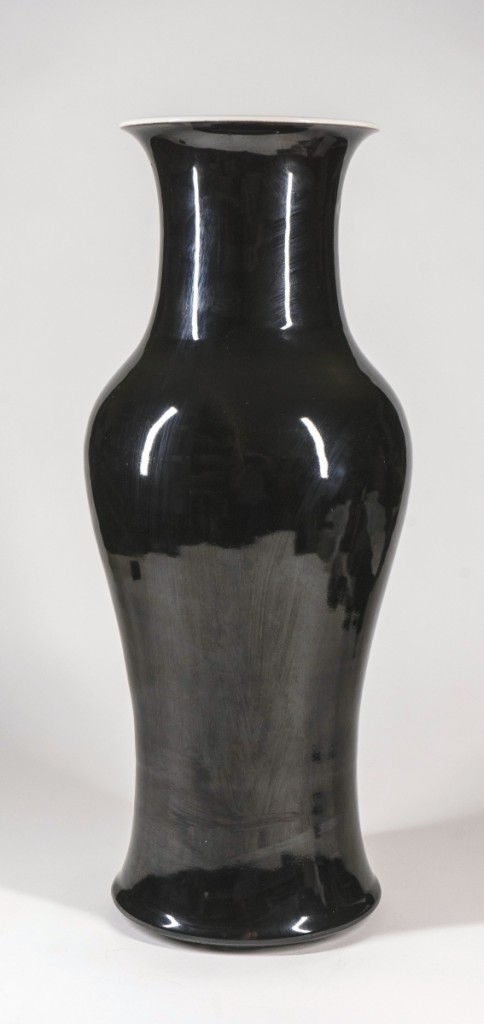
Of impressive size (17¼ inches) and with Kangxi underglaze blue six-character mark and of the period, a black-glazed vase went out at $5,120 to an online bidder.
In the Kinsman portrait, set against a dark background, which contrasts with his white hair and blue eyes, Washington sits off center with his head turned slightly to the viewer’s left dressed in a black velvet suit and white shirt with linen ruffle. Like the original Athenaeum portrait, it is painted on basketweave canvas, and retains its original stretcher and giltwood frame with only minor areas of inpainting, most of which appears to cover original paint beneath.
Keno noted, “Like the ‘Diana’ bronze, on a scale of one to ten, this masterwork by one of Federal America’s greatest artists rates a ten in terms of quality, rarity, condition and provenance. We are ecstatic but not surprised that it brought such a strong price.”
January has traditionally been Outsider art month in New York City, with a dedicated exhibition and sale as well as auction house sessions. In this auction there was a singular work, and it was William L. Hawkins’ (1895-1990) “Frankenstein,” an enamel paint on repurposed beaverboard with sand that was bid to $41,600 by an online buyer. Hawkins was an American folk artist whose work began receiving acclaim in the 1980s with his works exhibited in institutions such as the Smithsonian American Art Museum, American Folk Art Museum in New York City and San Diego’s Mingei International Museum. He was known to use a variety of media, including discarded materials, to create his paintings.
If his depiction of Mary Shelley’s creature looks unmenacing with a enigmatic smile, it may have to do with its inspiration. Catalog notes for the painting recounts Lindsay Gallery’s Duff Lindsay’s story of going over to Hawkins’s house to watch him paint. “He always said that the inspiration for this piece came from the front of the Frankenberry cereal box,” recalled Lindsay.
The first owner of “Frankenstein” was Lee Garrett, Hawkins’s friend and fellow artist who entered one of the 87-year-old Hawkins’s paintings into the 1982 Ohio World’s fair, thereby exposing his work to the world and propelling his career. After Garrett, the painting was acquired by Josephine and Walter Buhl Ford II (1920-1991), Grosse Pointe Shores, Mich., and it sold from their collection at Sotheby’s in October 2006 for $78,000. “Frankenstein” this time went to a dealer and “is headed back to Columbus, where it was born,” said Keno.
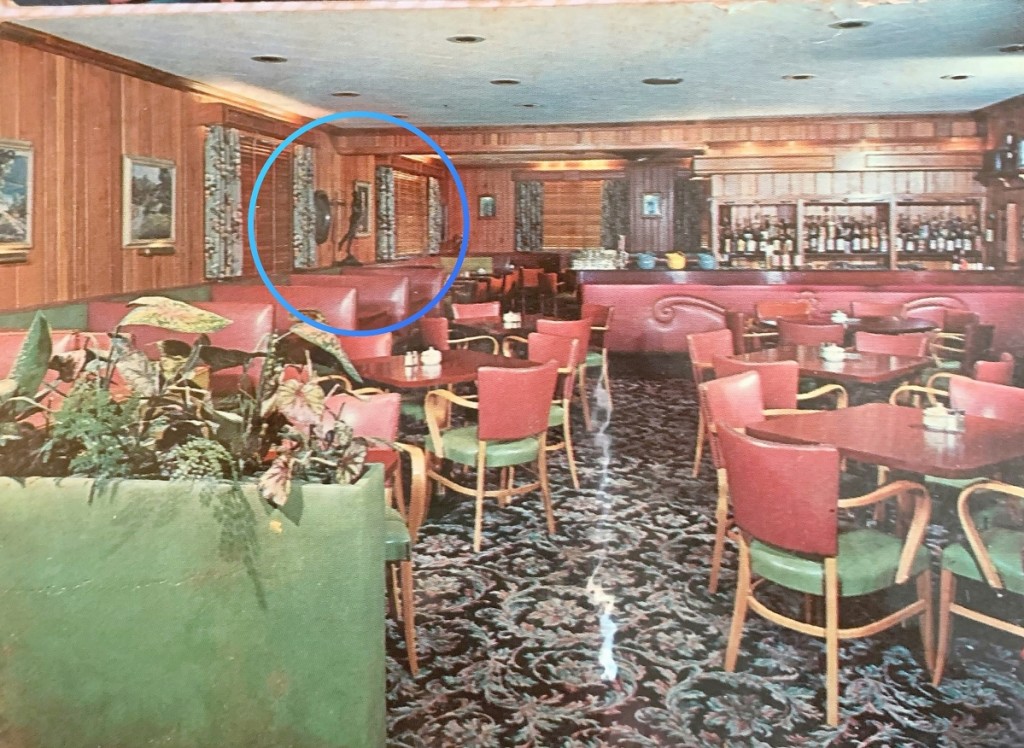
“Diana” shown as she was installed in the interior of the Glasgow Arms Restaurant in Maryland after being purchased by owner “Gus” Constantine Sclavos in 1959.
A flambe meiping vase with Qianlong mark and of the period, a very rare form, is headed back to China, having attracted a winning bid of $21,250 from a phone bidder. Two slightly larger flambe-glazed meipings, also with Qianlong seal-mark and of the period, are in the Shanghai Museum. “Fortunately, we had a person who handled the calls from Asia and who speaks fluent Chinese,” said Keno.
Of impressive size (17¼ inches) and with Kangxi underglaze blue six-character mark and of the period, a black-glazed vase went out at $5,120 to an online bidder. It featured a cylindrical flared neck and spreading foot, and its exterior was covered in a lustrous black glaze thinning subtly to dark chocolate brown just below the white glazed rim.
“In terms of ‘Diana’ and the Kinsman-Washington portrait, it goes to show that the best will always do well,” said Keno in summary. “Also, it is encouraging that ‘Diana’ was the first major purchase by a young Manhattan couple. The sale price for ‘Diana’ was the third highest price for a ‘Diana’ bronze and the fifth highest price for any work by Augustus Saint-Gaudens.”
Prices given include the buyer’s premium as stated by the auction house. For more information, 212-734-2381 or www.kenoauctions.com.




